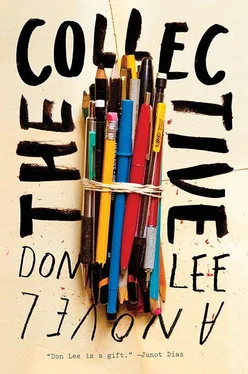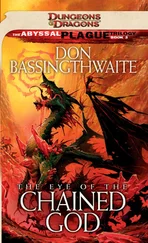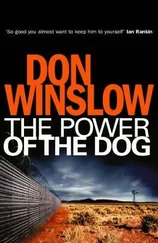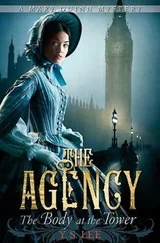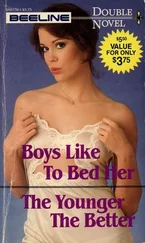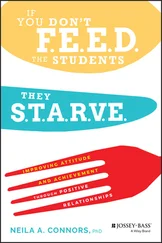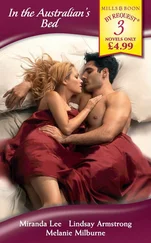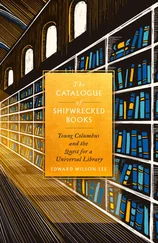On Sunday, May 2, five days before her exhibition would be open to the public, Jessica gave the remaining members of the 3AC a preview of Dis/Orienting Proportions . We walked up the stairs to the second-floor foyer of the City Hall Annex on Inman Street, and there, in the exhibition space known as Gallery 57, past a knot of freestanding partitions that had been temporarily assembled to conceal the installation until its unveiling, stood three life-sized mannequins. They were of Bruce Lee, Charlie Chan, and Suzie Wong.
Bruce Lee was dressed in the yellow tracksuit with black stripes that he had sported in The Game of Death . He was positioned in a three-quarters fighting stance, one arm up, ready to parry, the other forward and down to block. Jessica had silkscreened a black-and-white photograph of Lee’s face onto a sheet of rubber and stretched it over the mannequin’s head, which was crowned by a high-end wig. All the mannequins had very realistic wigs, styled by Jimmy Fung. The clothes had been just as skillfully sewn by Trudy Lun, the theater costume designer/seamstress.
Charlie Chan — made portly with foam padding — was in a tweed three-piece suit and bow tie, with slicked-back hair and a Fu Manchu mustache. He was bowing slightly, his palms pressed together.
Suzie Wong had her hip cocked to one side, fist resting on it. She was in a form-fitting cheongsam, the silk the lightest blue with a hint of lavender, accessorized with a matching hair band and open-toed pumps — the outfit Nancy Kwan had worn in The World of Suzie Wong when she modeled for William Holden’s painting.
What made the mannequins distinctive, though, was that Bruce Lee and Charlie Chan had their zippers open, baring erect penises and scrotums. Suzie Wong’s cheongsam also had an open zipper, but the zipper and the vulva that it exposed (a clone of Jessica’s vulva) were horizontal , an allusion to the old myth that Asian women had sideways vaginas. Framed by the lashes of the zipper’s jagged teeth, the labia resembled a slitted eye. There was a one-yuan coin stuck between the folds.
The dental alginate molds Jessica had made of Joshua’s and my genitals had been the first of a four-part process. For the second, she had poured plaster of Paris into the molds, then dismantled the alginate to reveal the casts of the plaster erections, which she filed and sandpapered and filled with spackling paste to fix voids and defects. After that, she applied a coat of acrylic polymer to smooth out the surface even further, then painted on a thin layer of latex rubber molding compound on the plaster, waiting twenty-four hours for it to dry before painting another layer, repeating until she had accumulated ten coats. She then dislodged the latex molds from the plaster penises, sprayed the insides with a release agent, filled them with two-component RTV silicone, and suspended the molds inside two-liter soda bottles with the tops cut off (the water in the bottles equalized the pressure, since the weight of the silicone had a tendency to bulge). After another twenty-four hours, she peeled the rubber off to uncover the replicas.
They were, in fact, exact replicas. Contrary to Jessica’s assertion, all penises did not look alike. I identified mine right away. It was on Bruce Lee, and I could see every vein, ridge, and anatomical detail, every little bump and crease and crinkle. It was, as far as I could tell, a perfect facsimile, although I looked much thicker and longer than I had imagined — far bigger, I was pleased to see, than old Charlie Chan (Joshua).
But there was one anomaly in sacrifice of verisimilitude — the color. Jessica had made all the genitalia bright fluorescent yellow, and what’s more, they glowed in the dark. Spotlights overhead were programmed to alternate what was illuminated and what was not, a face, an arm, a leg, sometimes making an erection or labia dramatically luminescent.
Among the group, there was a lot of twittering and giggling, but I was, relatively speaking, assuaged. When Jessica had described her plans for the installation and enlisted my help, I had feared it’d be a stunt, a one-off for which she would be ridiculed and humiliated, yet there was (almost) a tenable integrity to the mannequins, and the political implications were provocative, the stretched silkscreened rubber of the faces making the Asian icons seem as if they were yowling in horror and agony, eyes monstrously slanted.
Characteristic of all of Jessica’s work, there were hidden elements, pieces within pieces. She had carved a cavity in each head, prying their mouths open, and inside each maw was a menagerie. In Bruce Lee’s mouth were miniatures of dogs — dozens of them in every variety, running, leaping, lying, snarling, shitting. In Charlie Chan’s mouth were rats. In Suzie Wong’s mouth were snakes. And the miniatures were fluorescent yellow, glow-in-the-dark as well, creating a spooky, contrapuntal incandescence whenever the spotlights changed, as if the skulls were lit from within, while the genitals appeared disembodied, floating apart. Moreover, since the mannequins were mounted on platforms, you had to get on your tiptoes and lean close to peek into the mouths, and the figures were purposely positioned so you couldn’t avoid brushing or bumping up against the genitalia, contributing to the exhibition’s gestalt of discomfiture — indeed, of disorientation.
After the preview, we migrated to the house on Walker Street for the usual potluck. The group included Jimmy, Trudy, Grace, Leon, Jay, Cindy, Phil, and Annie — the smallest turnout we’d ever had. We congregated in the kitchen, unwrapping and heating up various dishes: yakisoba, salt-and-pepper squid, cucumber sunomono, bean sprouts, chicken karaage, gyoza.
“I have to admit,” I told Jessica, “I had my doubts, but the exhibit works. You pulled it off. It’s pretty fabulous.”
“Hear, hear,” Joshua said.
“You really think so?” Jessica said, flush with relief. “I knew I was taking a risk, doing something so different, with huge potential for disaster, but I kept following my instincts.”
“The stretched faces, the mouths, the lighting — it’s all really ingenious,” I said.
“I didn’t have time to finish the installation part. I was going to have these Judd-like boxes and some table sculptures.”
“You didn’t need them,” Joshua said. “The mannequins have enough depth on their own.”
I went outside to the deck to barbecue kalbi on our grill, and Joshua soon joined me there, bringing a bottle of Tsingtao out for me. “So what’d you really think?” he asked.
This was the lesson I’d learned about being friends with artists: at first, you were honest in your critiques, just like you had been in grad school. But when you were honest, you’d find it would cause days, weeks of tension and bruised feelings, a rift that would sometimes never fully mend. You learned what artists really wanted from their friends. It wasn’t honesty, it wasn’t constructive criticism, it wasn’t the truth. They’d get the truth soon enough, from dealers, editors, directors, agents, grant-makers, foundations, critics, and the public. What artists really wanted from their friends was simply support, and encouragement, and, if it wasn’t too much of an imposition, unconditional adoration. About works in progress, they wanted you to tell them: It’s perfect. You don’t need to change a thing. It’s good to go. About works that had already been released to the world, fait accompli, they wanted you to tell them: It’s brilliant. You’re brilliant. I love it. I love you. What was the point of saying anything else? Yet, this did not prevent us from disparaging our friends’ work behind their backs.
“It’s not as silly as I thought it’d be,” I said to Joshua, “but it’s still kind of silly. What about you? What’d you think?”
Читать дальше
